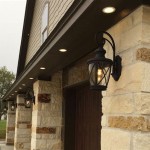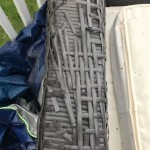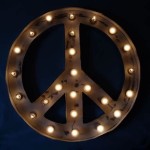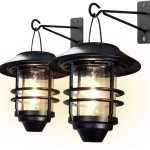Outdoor Photography Equipment List
Capturing the beauty and grandeur of the outdoors requires a specific set of gear tailored for the challenges of shooting in diverse environments. From towering mountains to serene lakes, each location presents unique lighting conditions, weather patterns, and terrain, demanding a well-equipped photographer. This article provides a comprehensive list of essential outdoor photography equipment, covering cameras, lenses, accessories, and considerations for a successful photographic adventure.
Camera Body
The foundation of your outdoor photography setup is the camera body. Selecting the right camera body depends on the type of photography you intend to pursue and your budget. For landscape photography, a full-frame or APS-C sensor camera offers superior image quality and low-light performance. If you're focused on wildlife or action shots, a camera with a fast burst rate and advanced autofocus is essential. Consider features like weather sealing, robust build quality, and user-friendly ergonomics for outdoor use.
Here are some camera body considerations:
- Sensor Size: Full-frame, APS-C, Micro Four Thirds, or other formats impact image quality and low-light performance.
- Autofocus System: The speed and accuracy of the autofocus system are crucial for capturing fast-moving subjects.
- Burst Rate: The number of frames per second a camera can capture is important for action photography.
- Weather Sealing: A weather-sealed camera protects against rain, dust, and moisture.
- Ergonomics: A comfortable grip and intuitive controls enhance your shooting experience.
Lenses
Lenses are the eyes of your camera, determining the field of view and image quality. Choosing the right lens set for outdoor photography depends on the type of subjects you plan to capture. Here are some essential lens categories:
- Wide-Angle Lenses: Capture expansive landscapes and emphasize perspective. Ideal for scenic views and architectural photography. Focal length range: 10-24mm.
- Standard Lenses: Offer a natural field of view similar to human vision. Versatile for various subjects, including portraits, landscapes, and wildlife. Focal length range: 24-35mm.
- Telephoto Lenses: Provide magnification to capture distant subjects. Ideal for wildlife, sports, and bird photography. Focal length range: 70-600mm.
- Macro Lenses: Enable close-up photography for capturing intricate details of flowers, insects, and textures. Focal length range: 50-200mm.
Consider your photography style and the subjects you wish to capture when choosing lenses. A versatile kit could include a wide-angle lens for landscapes, a standard lens for general photography, and a telephoto lens for wildlife or distant subjects.
Accessories
Beyond cameras and lenses, several accessories enhance your outdoor photography experience. These include:
- Tripod: Essential for stability in low-light conditions and capturing sharp images with long exposures. Choose a sturdy tripod with a suitable load capacity for your camera and lens combination.
- Remote Shutter Release: Minimizes camera shake and allows for precise timing in long exposures or when shooting from a tripod.
- Neutral Density Filters (ND Filters): Reduce light entering the lens, enabling long exposures for creating silky water effects or smoothing out movement in landscapes.
- Polarizing Filter: Reduces glare and reflections, enhancing colors and contrast in landscapes and skies.
- Backpack: A comfortable and durable backpack to carry your gear securely and efficiently.
- Headlamp or Flashlight: Provides light for setting up your equipment in low-light conditions.
- Lens Cleaning Kit: Essential for maintaining the cleanliness of your lenses, ensuring optimal image quality.
- Memory Cards: High-capacity memory cards are crucial for storing your images. Use a SD card reader for quick transfer to your computer.
- Spare Batteries: Always carry extra batteries, especially in cold conditions, as battery life can be significantly reduced.
Considerations for Outdoor Photography
Outdoor photography presents unique challenges requiring specific considerations:
- Weather Conditions: Protect your equipment from rain, snow, dust, and extreme temperatures. Invest in weather-sealed gear and use protective coverings when necessary.
- Lighting: The sun's position and intensity significantly affect your images. Utilize the golden hour (sunrise and sunset) for soft, warm light and consider using fill-in flash or reflectors to balance shadows.
- Terrain: Be mindful of slippery surfaces, uneven terrain, and potential wildlife encounters. Choose appropriate footwear and carry essential safety gear.
Outdoor photography is an exciting and rewarding pursuit. By investing in the right equipment and considering the unique challenges of shooting in diverse environments, you can capture breathtaking images and preserve memories of your adventures.

Essential Photography Equipment Checklist

Photography And Lighting Equipment For Bloggers Sarah Hearts

21 Outdoor Studio Setup Ideas Photography Props Mini Sessions Backdrops

Last Time I Talked About My Blog Photography Equipment Was Two Years A Go Over The Beginner
Professional Photography Equipment List Thimble

Outdoor Photography Equipment Stock Photo Free

How To Set Up A Home Photography Studio Easy

Photo Shoot Checklist Photography Skills Business Forms

18 Types Of Photography Lighting Equipment You Need To Know

18 Types Of Photography Lighting Equipment You Need To Know
Related Posts







